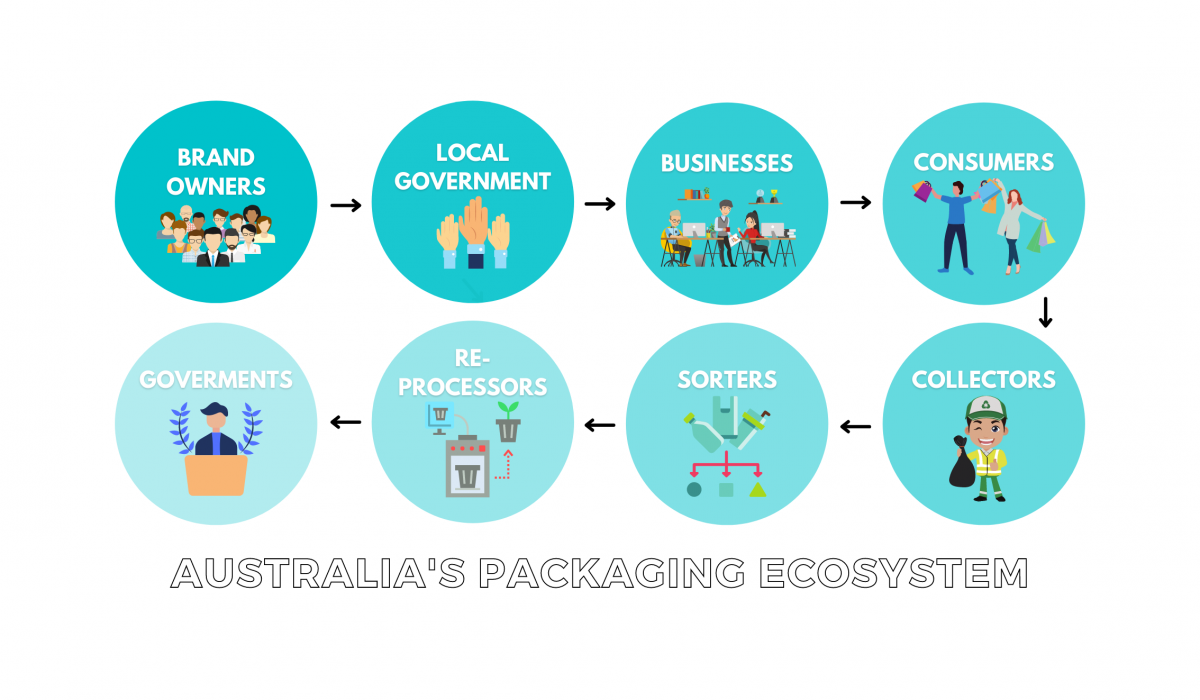Are you doing your part to sustain our packaging future?
Over 5 million tonnes of packaging material is placed into the Australian market annually; one million tonnes being single-use plastics. Of this annual rate, 84% of the packaging material is being sent to landfills and only 13% is correctly recycled. Australia’s current ‘take, make and waste’ approach is harming our environment and will not sustain our future communities. While there is no one answer to fix Australia’s single-use packaging problem, packaging stakeholders recognise the need for change.
The 2025 National Packaging Targets outline a sustainable pathway for Australia to manage its packaging waste. The four targets address challenges between the amount of packaging material in use and the amount being recovered for use. To optimise the success of the Targets, collaboration from the packaging ecosystem is key.

2025 APCO Targets
The Australian Packaging Covenant Organisation (APCO) is facilitating the delivery of the 2025 National Packaging Targets:
1. 100% reusable, recyclable or compostable packaging.
2. 70% of plastic packaging being recycled or composted.
3. 50% of average recycled content included in packaging (revised from 30% in 2020).
4. The phase out of problematic and unnecessary single-use plastics packaging.
Assistant Minister for Waste Reduction and Environment Management, Trevor Evans claimed that Australian Governments are ‘relying on APCO and its members to bring about a more sustainable approach to packaging’.
Our Packaging Future
APCO recently launched ‘Our Packaging Future’, a strategic framework outlining how each stakeholder in the packaging ecosystem can work towards the 2025 National Packaging Targets. With an overarching goal of building a collaborative ecosystem that keeps materials out of landfills, it also looks to maximise the circular value of materials within Australia. The framework provides a clear and systematic environmental approach to building Australia’s sustainable packaging future.
The strategies focus on packaging design, improved collection and recycling systems and expanded markets for used packaging. Wholistically, each outcome addresses more than one of the National Packaging Targets. Phasing out problematic and unnecessary single-use plastic is one of the most important strategies within the framework and is the simplest way to reduce plastic waste and pollution. It also ensures that 100% of packaging is reusable, recyclable or compostable and that 70% of plastic packaging is recycled or composted.
Making Change Authentic
Doug Parkinson, CEO of Sancell, shares some insights for businesses starting their sustainable packaging journey:

It’s important to note that transitioning from Polystyrene to, for example, a paper product may not be the best environmental solution. While many environmentalists claim that paper is more environmentally friendly than plastic, the consequences of the entire lifespan, from cradle to grave may surprise you. When using Sancell’s Protective Packaging Solutions, you will be working towards the 2025 National Packaging Targets. And, as we continue to develop our 14001 Environmental Management System, we will continue to improve our progress towards the Targets. Currently, most of Sancell’s products are:
– 100% reusable (no single-use plastics)
– 100% recyclable (approved through the REDcycle program)
– Include 20% recycled content (EnviroTherm Thermal Liners and Armour Padded Mailer Bags) or,
– Include 15% recycled content (Bubble Wrap)
– Manufactured under a 14001 Environmental Management System
It isn’t up to just one stakeholder of the Ecosystem; it’s up to all of Australia to recognise the need for change and work together to apply principles of a circular economy. Gaining commitment from each stakeholder in the chain and keeping the packaging ecosystem accountable is the only way we are going to make a real difference to the state of our landfills. So, ask yourself, what are you doing to sustain our packaging future?
View our latest APCO report and action plan towards the 2025 National Packaging Targets.
